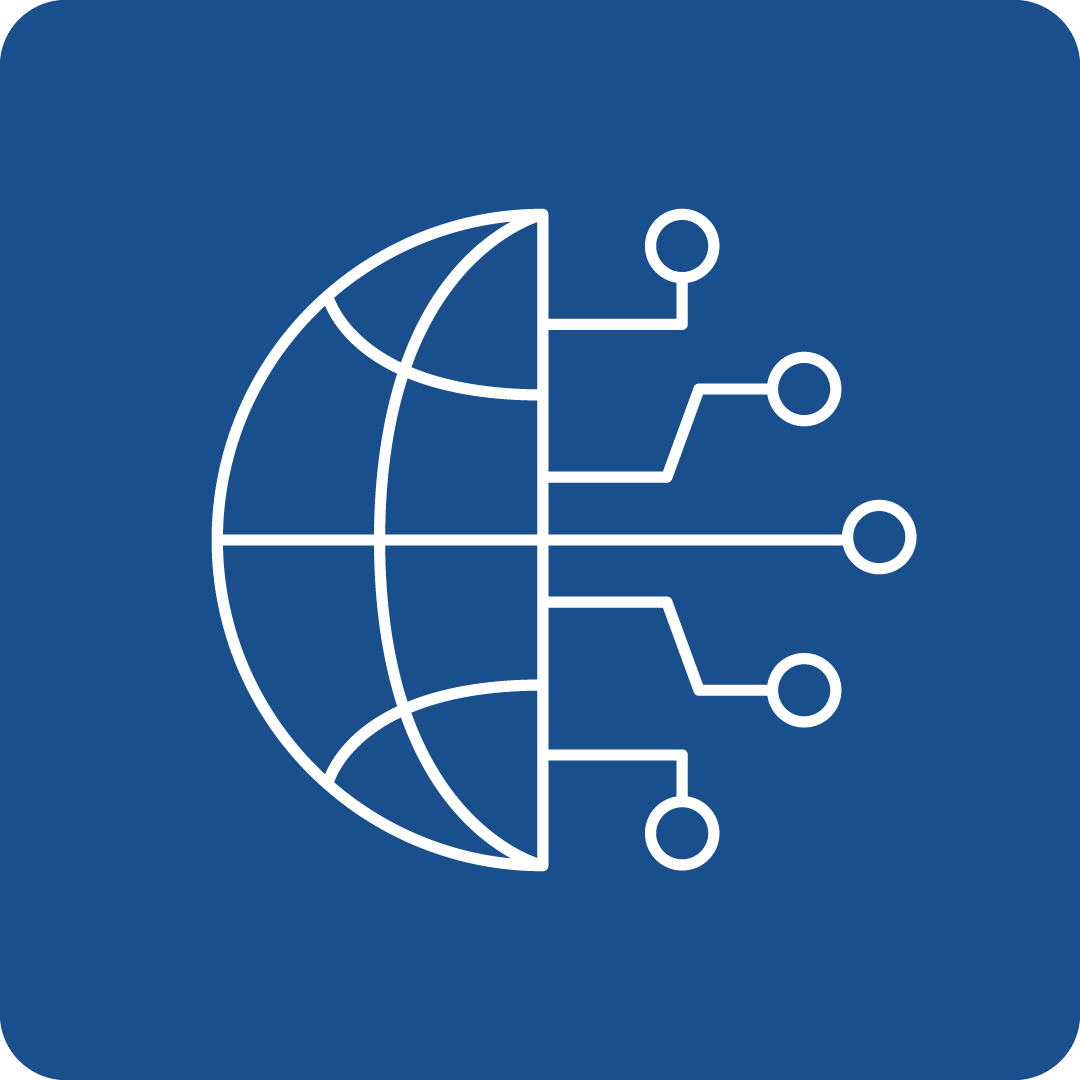Filter Search for grants
Call Navigation
Deadline expired
The deadline for this call has expired.
Call key data
Optimising multimodal network and traffic management, harnessing data from infrastructures, mobility of passengers and freight transport
Funding Program
Horizon Europe: Cluster 5 - Climate, Energy and Mobility
Call number
HORIZON-CL5-2024-D6-01-06
deadlines
Opening
07.05.2024
Deadline
05.09.2024 17:00
Funding rate
100%
Call budget
€ 10,000,000.00
Estimated EU contribution per project
between € 4,000,000.00 and € 5,000,000.00
Link to the call
Link to the submission
Call content
short description
Actions should build on best practices (technological, non-technological and socio-economic), ongoing projects on multimodal network and traffic management, as well as other initiatives (e.g. the Digital Transport and Logistics Forum and the common European mobility data space), with the aim of optimising multimodal network, traffic management and door-to-door mobility of passengers and freight.
Call objectives
Optimised multimodal network and traffic management is essential for an efficient transport network and seamless door-to-door mobility of passengers and freight. Such advanced capabilities need to be supported by harnessing data from physical and digital infrastructures, as well as from the mobility of passengers and freight, involving different types of vehicles, rolling stock, aircraft and vessels (including zero-emission, connected and automated), technologies and the use of innovative services. At the same time, novel forms of mobility (e.g. shared, micro-mobility or even hyperloop) and new services (e.g. Mobility as a Service) present new challenges, but also great opportunities for enhanced management and optimisation of the transport network. This includes advances to fully utilise dynamic and interoperable data exchange from multiple actors and transport modes, for well-tested and validated systems and operations, with appropriate governance arrangements in place.
In this context, building on best practices (technological, non-technological and socio-economic), ongoing projects on multimodal network and traffic management, as well as other initiatives (e.g. the Digital Transport and Logistics Forum and the common European mobility data space), actions should address at least 6 of the following aspects:
- Developing and testing new generation multimodal, flexible, agile and adaptable, secure and resilient transport network and traffic management systems, leveraging state of the art technologies (e.g. artificial intelligence, big data, edge computing, internet of things, blockchain).
- Assessing and simulating the effects on multimodal network and traffic management of new forms of mobility (e.g. zero-emission, connected and automated vehicles and vessels, car sharing/pooling, active-/micro-mobility, sustainable land/air transport modes and drones), as well as of innovative services (e.g. Mobility/Logistics as a Service), in different urban and rural environments, considering the socio-economic acceptability and different user needs (including vulnerable and gender groups).
- Performing simulations for network-wide optimisation of traffic models, aiming towards a “social optimum” and an evaluation of mobility options for multimodal mobility and freight flows (including last-mile), enabling a modal shift to more sustainable modes (leveraging public transport), while addressing planned and unplanned events of mobility and freight systems under disruption.
- Demonstrating the collection, aggregation, analysis and use of network-wide data from infrastructures, vehicles/vessels and users (using ICT and EU satellite-based systems), from across transport modes (modal and intermodal data), stakeholders and national borders, while preserving data privacy, security and confidentiality to data providers, thereby enabling effective and intelligent multimodal network and traffic management, and even further data exchanges with other sectors (e.g. energy and telecoms).
- Performing early pilot activities on multimodal network and traffic management of limited scale in mobility hubs (e.g. rail nodes, maritime or inland ports), where cross-modal or hinterland inter-connections are present for passenger and freight traffic flows.
- Designing and testing innovative multimodal network and traffic management services, offered by public and/or private stakeholders, which can be operated at network centres (e.g. at cities or hubs) and/or at decentralised level (e.g. by users or vehicles/vessels themselves).
- Developing and showcasing workable governance and dynamic incentive models, for the effective engagement of public and private stakeholders in interoperable data exchange, in the optimisation of transport network and traffic management and in promoting a better use of (public) transport systems.
- Evaluating the qualitative and quantitative impact of the proposed measures and project results, including on reducing travel delay, transport emissions and energy consumption, with a clear baseline for each use case.
If projects use satellite-based earth observation, positioning, navigation and/or related timing data and services, beneficiaries are expected to describe if and how the use of Copernicus and/or Galileo/EGNOS are incorporated in the proposed solutions. In addition, proposals should describe the technological and societal readiness of the systems and/or techniques proposed for development and use, particularly in the case of systems based on Artificial Intelligence.
The multimodal aspects listed above are complementary and in synergy with actions foreseen in other parts of the Work Programme, such as in the areas of C-ITS (as part of Connected, Cooperative and Automated Mobility), rail traffic management (as part of EU-Rail Joint Undertaking), air traffic management (as part of SESAR 3 Joint Undertaking) and vessel traffic management (as part of Zero-Emission Waterborne Transport).
In line with the Union’s strategy for international cooperation in research and innovation, international cooperation is encouraged.
read more
Expected results
Project results are expected to contribute to at least 4 of the following expected outcomes:
- Optimised multimodal transport network and traffic management, for efficient door-to-door mobility of passengers and freight (from producers to last mile deliveries).
- Validated solutions for effective and secure data exchange across all modes of transport, for dynamic and responsive multimodal network and traffic management.
- Validated systems for accurate detection and resolution of network bottlenecks, improving safety, security, resilience and overall performance of the transport network, enabling pro-active mobility management.
- New tools and services for optimising mobility of passengers and freight, in cities and other areas, cutting traffic jams and improving multimodal traffic flows. The proposed solutions should demonstrate (e.g. through simulations, pilots) the potential to reduce by at least 30% the average travel delay, as well as the overall transport energy consumption and emissions of greenhouse gases and other pollutants in the network.
- Workable governance arrangements for multimodal transport network and traffic management, in view of further supporting regulatory and policy actions.
read more
Eligibility Criteria
Regions / countries for funding
Moldova (Moldova), Albania (Shqipëria), Armenia (Հայաստան), Azerbaijan (Azərbaycan), Belarus (Беларусь), Bosnia and Herzegovina (Bosna i Hercegovina / Босна и Херцеговина), Faeroes (Føroyar / Færøerne), Georgia (საქართველო), Iceland (Ísland), Israel (ישראל / إِسْرَائِيل), Kosovo (Kosova/Kosovë / Косово), Montenegro (Црна Гора), Morocco (المغرب), New Zealand (Aotearoa), North Macedonia (Северна Македонија), Norway (Norge), Serbia (Srbija/Сpбија), Tunisia (تونس /Tūnis), Türkiye, Ukraine (Україна), United Kingdom
eligible entities
Education and training institution, International organization, Non-Profit Organisation (NPO) / Non-Governmental Organisation (NGO), Other, Private institution, incl. private company (private for profit), Public Body (national, regional and local; incl. EGTCs), Research Institution incl. University, Small and medium-sized enterprise (SME)
Mandatory partnership
Yes
Project Partnership
To be eligible for funding, applicants must be established in one of the following countries:
- the Member States of the European Union, including their outermost regions
- the Overseas Countries and Territories (OCTs) linked to the Member States
- third countries associated to Horizon Europe - see list of particpating countries
Only legal entities forming a consortium are eligible to participate in actions provided that the consortium includes, as beneficiaries, three legal entities independent from each other and each established in a different country as follows:
- at least one independent legal entity established in a Member State; and
- at least two other independent legal entities, each established in different Member States or Associated Countries.
Any legal entity, regardless of its place of establishment, including legal entities from non-associated third countries or international organisations (including international European research organisations) is eligible to participate (whether it is eligible for funding or not), provided that the conditions laid down in the Horizon Europe Regulation have been met, along with any other conditions laid down in the specific call topic.
A ‘legal entity’ means any natural or legal person created and recognised as such under national law, EU law or international law, which has legal personality and which may, acting in its own name, exercise rights and be subject to obligations, or an entity without legal personality.
Specific cases:
- Affiliated entities — Affiliated entities (i.e. entities with a legal or capital link to a beneficiary which participate in the action with similar rights and obligations to the beneficiaries, but which do not sign the grant agreement and therefore do not become beneficiaries themselves) are allowed, if they are eligible for participation and funding.
- Associated partners — Associated partners (i.e. entities which participate in the action without signing the grant agreement, and without the right to charge costs or claim contributions) are allowed, subject to any conditions regarding associated partners set out in the specific call conditions.
- Entities without legal personality — Entities which do not have legal personality under their national law may exceptionally participate, provided that their representatives have the capacity to undertake legal obligations on their behalf, and offer guarantees to protect the EU’s financial interests equivalent to those offered by legal persons.
- EU bodies — Legal entities created under EU law including decentralised agencies may be part of the consortium, unless provided for otherwise in their basic act.
- Joint Research Centre (‘JRC’)— Where provided for in the specific call conditions, applicants may include in their proposals the possible contribution of the JRC but the JRC will not participate in the preparation and submission of the proposal. Applicants will indicate the contribution that the JRC could bring to the project based on the scope of the topic text. After the evaluation process, the JRC and the consortium selected for funding may come to an agreement on the specific terms of the participation of the JRC. If an agreement is found, the JRC may accede to the grant agreement as beneficiary requesting zero funding or participate as an associated partner, and would accede to the consortium as a member.
- Associations and interest groupings — Entities composed of members (e.g. European research infrastructure consortia (ERICs)) may participate as ‘sole beneficiaries’ or ‘beneficiaries without legal personality’. However, if the action is in practice implemented by the individual members, those members should also participate (either as beneficiaries or as affiliated entities, otherwise their costs will NOT be eligible.
other eligibility criteria
Activities are expected to achieve TRL 5 by the end of the project.
If projects use satellite-based earth observation, positioning, navigation and/or related timing data and services, beneficiaries must make use of Copernicus and/or Galileo/EGNOS (other data and services may additionally be used).
Additional information
Topics
Relevance for EU Macro-Region
EUSAIR - EU Strategy for the Adriatic and Ionian Region, EUSALP - EU Strategy for the Alpine Space, EUSBSR - EU Strategy for the Baltic Sea Region, EUSDR - EU Strategy for the Danube Region
UN Sustainable Development Goals (UN-SDGs)
![]()
Additional Information
All proposals must be submitted electronically via the Funders & Tenders Portal electronic submission system (accessible via the topic page in the Search Funding & Tenders section). Paper submissions are NOT possible.
Proposals must be complete and contain all parts and mandatory annexes and supporting documents, e.g. plan for the exploitation and dissemination of the results including communication activities, etc.
The application form will have two parts:
- Part A (to be filled in directly online) contains administrative information about the applicant organisations (future coordinator and beneficiaries and affiliated entities), the summarised budget for the proposal and call-specific questions;
- Part B (to be downloaded from the Portal submission system, completed and then assembled and re-uploaded as a PDF in the system) contains the technical description of the project.
Annexes and supporting documents will be directly available in the submission system and must be uploaded as PDF files (or other formats allowed by the system).
The limit for a full application (Part B) is 45 pages.
Contact
To see more information about this call, you can register for free here
or log in with an existing account.
Log in
Register now

